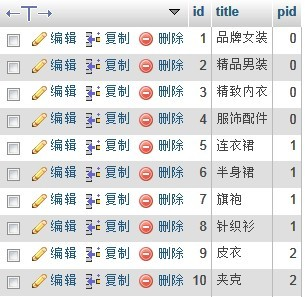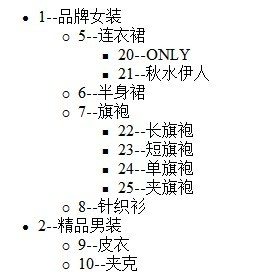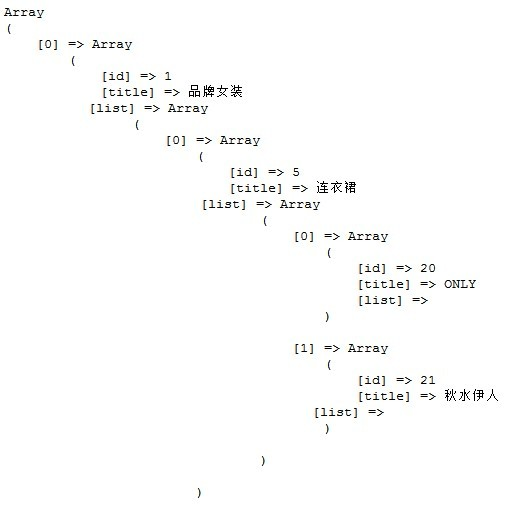Examples help you understand php recursive function principles and call methods
May 11, 2021 PHP
Table of contents
1. First, the use of references as parameters
2. Second, the use of global variables
3. Third, the use of static variables
When learning recursive functions, the whites may not be able to understand the principle and operating mechanism of recursive functions, recursive functions are commonly used to a class of functions, the most basic feature is that the function itself calls itself, but must be conditional judgment before calling itself, if the conditions are met, then call the function itself, if not satisfied, then terminate the function's self-call, and then the current process of the main control to the previous layer of functions to execute, otherwise it will be unlimited call. Here are three basic ways php implements recursive functions.
First, the use of references as parameters
function test($a=0,&$result=array()){
$a++;
if ($a<10) {
$result[]=$a;
test($a,$result);
}
echo $a;
return $result;
}
What is more interesting in this example is the value of echo a. I believe a lot of people think it's 12345678910, but it's not, it's 1098765432. W hy is that? B ecause the function recursives the next function before it executes echoa. The real execution of echo a is when the a-lt;10 condition is not met, echo a, returns to the result, for the upper layer, after executing the recursive function, starting to execute the echo $a of this layer, and so on.
Second, the use of global variables
function test($a=0,$result=array()){
global $result;
$a++;
if ($a<10) {
$result[]=$a;
test($a,$result);
}
return $result;
}
Third, the use of static variables
function test(){
static $count=0;
echo $count;
$count++;
}
test();
test();
test();
test();
test();
function test($a=0){
static $result=array();
$a++;
if ($a<10) {
$result[]=$a;
test($a);
}
return $result;
}
Summary
function test($a=0){
$a++;
if ($a<10) {
echo $a;
test($a);
}
}
The php function recursively calls the instance
function arrContentReplact($array)
{
if(is_array($array))
{
foreach($array as $k => $v)
{
$array[$k] = arrContentReplact($array[$k]);
}
}else
{
$array = str_replace(
array('<', '>'),
array('{', '}'),
$array
);
}
return $array;
}
$arr = array(array("< 小刚>","< 小晓>",array("<小强>",array("<浪人>"))),"< 小飞>","< 小李>","< 小红>");
$arr3 = arrContentReplact($arr);
echo "
";
print_r($arr3);
echo "
";
?>
PHP recursively implements infinite classification
CREATE TABLE IF NOT EXISTS `class` (
`id` mediumint(6) NOT NULL AUTO_INCREMENT,
`title` varchar(30) NOT NULL,
`pid` mediumint(6) NOT NULL DEFAULT '0',
PRIMARY KEY (`id`)
) ENGINE=MyISAM DEFAULT CHARSET=utf8;

function get_str($id = 0) {
global $str;
$sql = "select id,title from class where pid= $id";
$result = mysql_query($sql);//查询pid的子类的分类
if($result && mysql_affected_rows()){//如果有子类
$str .= '<ul>';
while ($row = mysql_fetch_array($result)) { //循环记录集
$str .= "<li>" . $row['id'] . "--" . $row['title'] . "</li>"; //构建字符串
get_str($row['id']); //调用get_str(),将记录集中的id参数传入函数中,继续查询下级
}
$str .= '</ul>';
}
return $str;
}
include_once('connect.php'); //连接数据库,connect.php文件自己写一个啊
echo get_str(0); //输出无限级分类

function get_array($id=0){
$sql = "select id,title from class where pid= $id";
$result = mysql_query($sql);//查询子类
$arr = array();
if($result && mysql_affected_rows()){//如果有子类
while($rows=mysql_fetch_assoc($result)){ //循环记录集
$rows['list'] = get_array($rows['id']); //调用函数,传入参数,继续查询下级
$arr[] = $rows; //组合数组
}
return $arr;
}
}
include_once('connect.php'); //连接数据库
$list = get_array(0); //调用函数
print_r($list); //输出数组

echo json_encode($list);